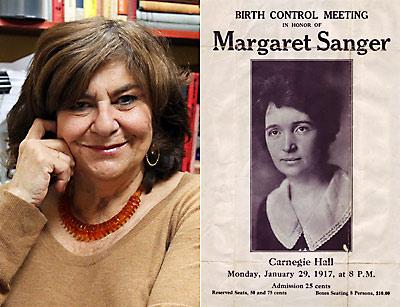Waste Plant Sale May Be Near
Waste Plant Sale May Be Near

A Lindenhurst company that submitted the sole response to East Hampton Town’s call for proposals to privatize the town-owned scavenger waste plant wants to purchase the plant, on Springs-Fireplace Road in East Hampton, for $300,000, or lease it for $1,000 a month for a total term of 30 years, starting March 1, with a guaranteed option to buy it in the first five years.
East End Processing Corporation is a subsidiary of Clear Flo Technologies, a company that owns and operates a wastewater facility in Lindenhurst as well as two other plants in Florida and Indiana.
Town Supervisor Bill Wilkinson said at a town board work session on Tuesday that he was ready to cut a deal with the company immediately.
But other board members suggested taking time to fully examine all the options, and to further vet the provisions in East End Processing’s proposal.
Mark Wagner of Cameron Engineering, a consultant to the town on the waste plant, was on hand. Mr. Wagner said that the cost of constructing a similar plant from scratch would be approximately $15 million. “Mark, you told me the other day that it is a $22 million facility,” Councilwoman Sylvia Overby interjected.
“That asset’s not worth $22 million to anybody but somebody in that business,” Mr. Wilkinson said.
Under the proposed terms, if East Hampton does not sell the plant to East End Processing right away, the town would be required to pay $18,575 per month to subsidize the costs of operating the site as a septic waste transfer station, for up to two years, or until three months after East End Processing gets the plant up and running as a fully operational waste treatment plant.
The company would pay for repairs and capital improvements at the plant, but retain ownership of any new equipment that is installed.
After it was built in the late 1980s, qualified town employees ran the plant, which is designed to process sewage pumped out of septic systems before discharging the final liquid product into the ground. Ten years ago, after those staffers left the town’s employ, the town began paying an outside company, Severn Trent, to oversee operations.
Dissatisfied with how the plant was running — numerous violations from the State Department of Environmental Conservation were racked up between February 2008 and March 2011 — the town board declined to renew Severn Trent’s contract last fall and suspended waste treatment until problems could be fixed.
Since January, Hamptons Septic Services has been operating the site as a waste transfer station, trucking deposits elsewhere for processing, under a short-term contract with the town.
Finding a company willing to take the plant over, make the necessary changes, and keep it open as a treatment site — “To me that’s a win,” Councilwoman Theresa Quigley said.
“It’s not within our core competencies o run sewage treatment,” Mr. Wilkinson said. “That’s why you have to cede some things to the private sector. I would vote it right now,” he said.
Although his 2012 budget, based on the assumption that the plant would be quickly privatized, contains only enough money to keep the plant open, solely as a transfer station, through the end of this month, Mr. Wilkinson said budget adjustments could be made if it is not immediately handed over.
“I think we have to look at what it would take for the town to bring the plant back to proper operation,” Councilman Peter Van Scoyoc said. “Some of this relates to controlling what’s happening inside your town. I think we have to carefully look at all the options, because we’re talking about such a long-term impact.”
If the town relinquishes its state permit to run a waste treatment plant, the ability to secure another in the future would be unlikely, Mr. Van Scoyoc pointed out.
While all of the board members were provided with a written analysis of East End Processing’s proposal by Mr. Wagner, Councilman Van Scoyoc said he was surprised to learn, during the work session discussion, that the town budget officer, Len Bernard, had prepared a financial analysis. “It would be helpful to have a copy,” he said. The analysis was not available to the press, Mr. Bernard said Tuesday, as it had not yet been distributed to all members of the board.
“Instead of just saying, ‘I agree with it, let’s go ahead,’ ” Ms. Overby told the supervisor, “I’d like to see the legal department look into how that agreement would be written.”
Mr. Wagner agreed, saying the board should make sure the proposal contains no “deal-breakers.” He said he had known the principals of Clear Flo Technologies, who are relatives of Ralph Macchio, the actor who portrayed the “Karate Kid,” for 30 years.
The proposed agreement calls for the ability to accept waste from outside East Hampton. Deborah Klughers, a town trustee who spoke at Tuesday’s board meeting, questioned the wisdom of processing more waste than necessary here, adding nitrogen from discharge to the ground, which can affect nearby waters and shellfish.
Mr. Van Scoyoc pointed out that odor is “a major concern for those near the plant. What kind of input would the town have, what kind of controls?” he asked.
And Councilman Dominick Stanzione suggested that discussion of what to do about the plant might be better in the context of a “comprehensive septic waste management plan” that includes provisions to address the impact of individual septic systems at residences throughout town. The board should “really use some serious planning techniques,” he said, to determine “where does the plan fall into a comprehensive plan?”
“To me, the issue is environmental impact,” Ms. Overby said. “I do think there’s a responsibility the town has . . . because it discharges directly into groundwater, we need to make sure,” she said.
One concern, she said by phone yesterday, is that the proposal specifies that pre-existing environmental problems remain the responsibility of the town. But, she said, no baseline conditions have been established. “We’re on the hook for everything,” she said, “and I don’t think the town should be on the hook for everything.”
She also said she is uncomfortable with a provision of the proposed agreement that would allow East End Processing to seek D.E.C. approval to loosen the environmental standards that are now imposed.
Mr. Wagner said Tuesday that it could cost up to $2 million to get the plant running in a way that, as Ms. Overby said, “you could practically drink what comes out the other end.” Bringing it up to minimum required standards would be less than that, he said, and there is grant money available.
But, he said, he believes it would still be difficult for the town to find a qualified operator to hire.
“I cannot understand how we can deliver a core competency, even recruit a core competency, because it’s not resident here,” Mr. Wilkinson said.
“I believe government should not be handling everything that comes its way,” said Ms. Quigley.
“I guarantee you, at the pace you’re going right now, you’ll be here in October,” Mr. Wilkinson told the board.
“I want plenty of time to go through it,” Ms. Overby said. “I would like the public to weigh in on it . . . to understand what we’re thinking about doing.”







